EXTREMELY RARE! Original WWII 1943 SPECIAL D-Day Planning Invasion Blueprint Sherman DD Amphibious 'Flotation Screen' Tank Overlay Blueprint - Metropolitan Cammell - Birmingham, England, UK





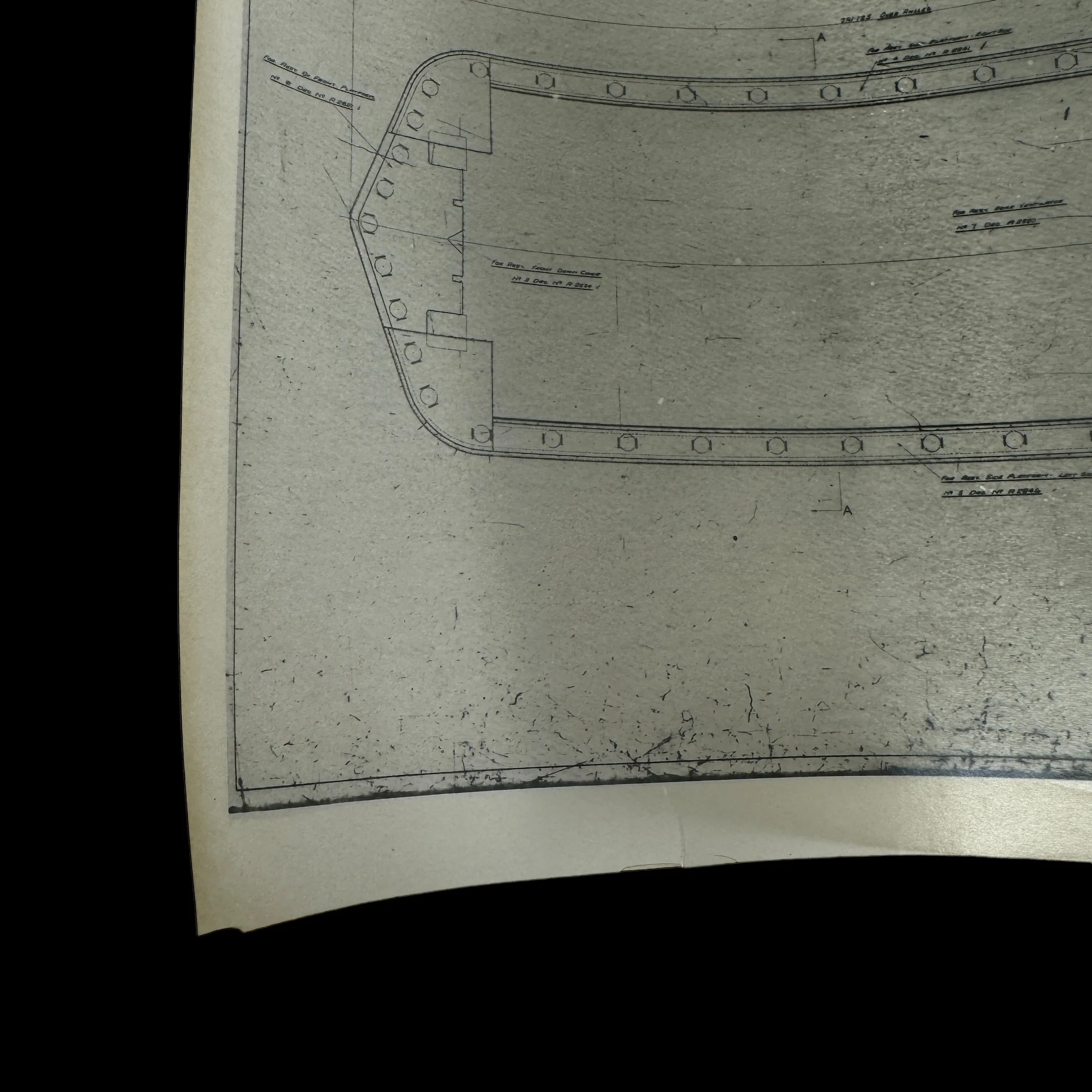
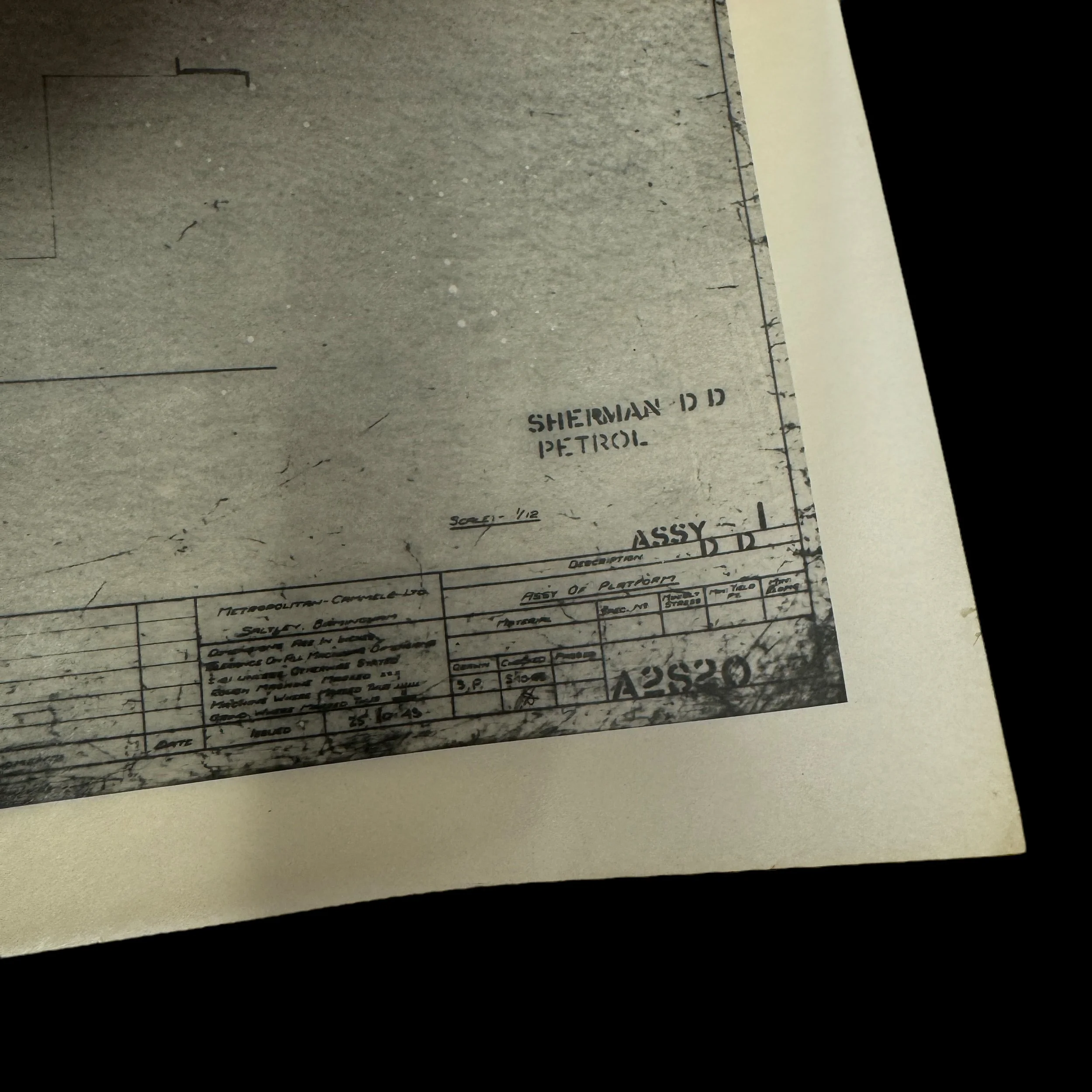
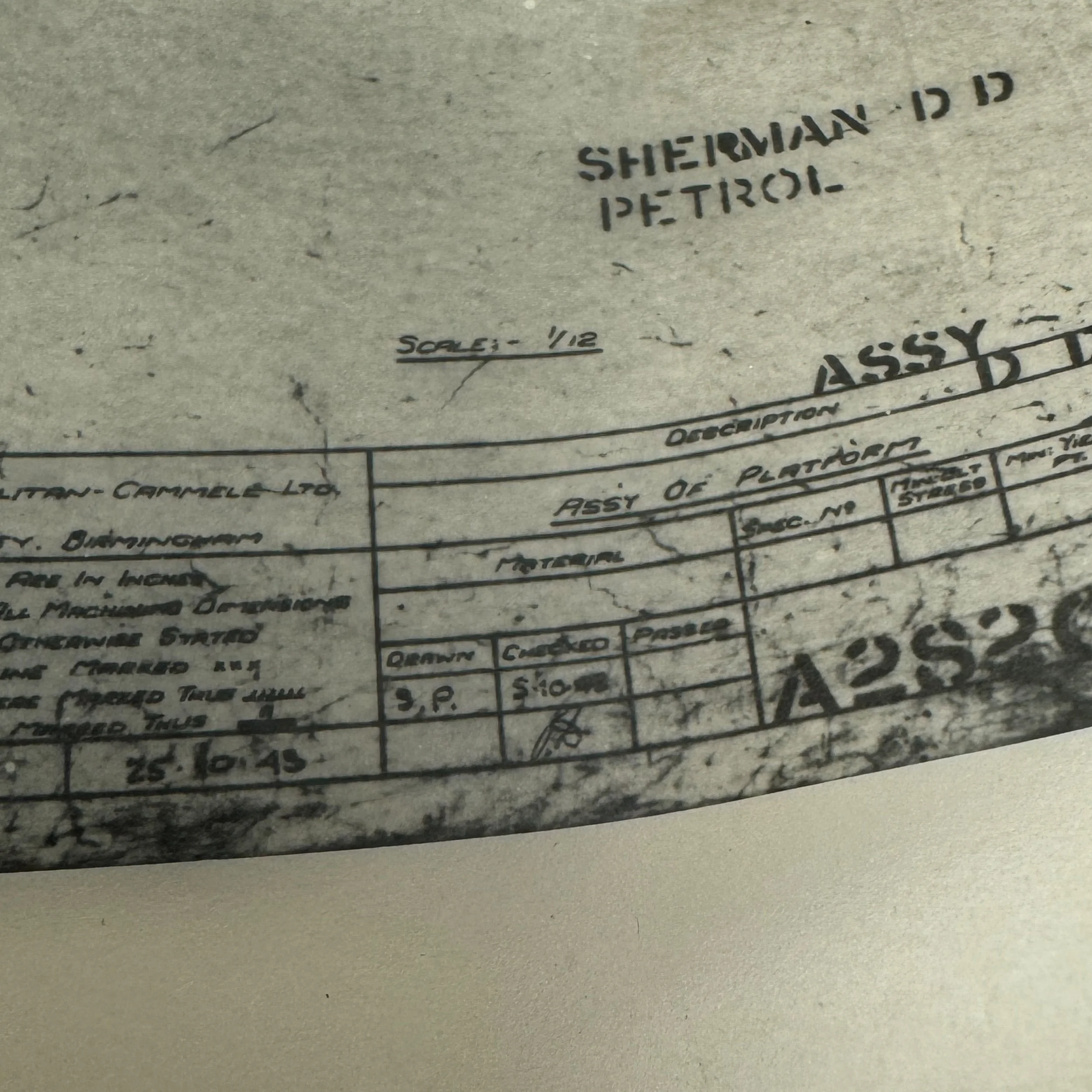

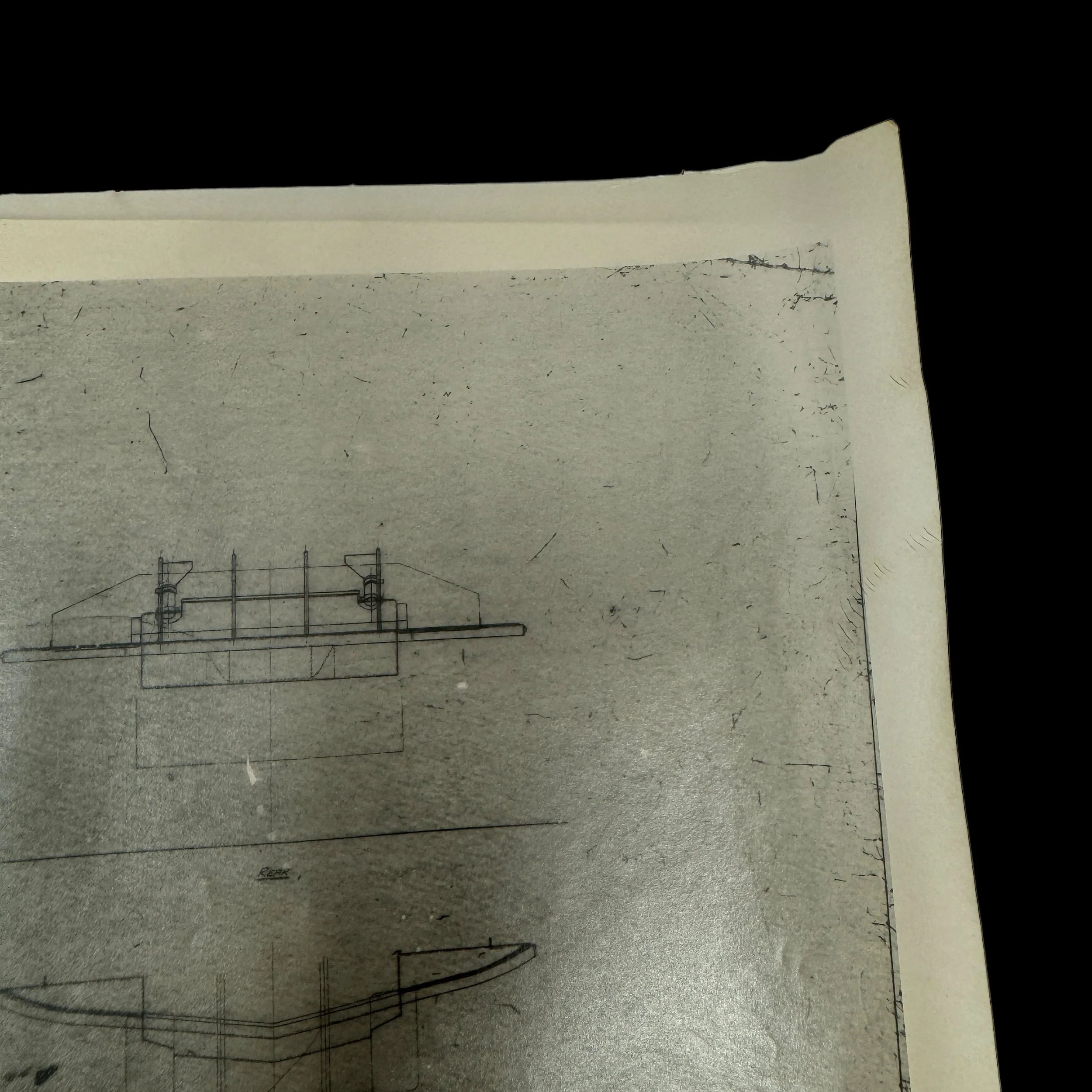




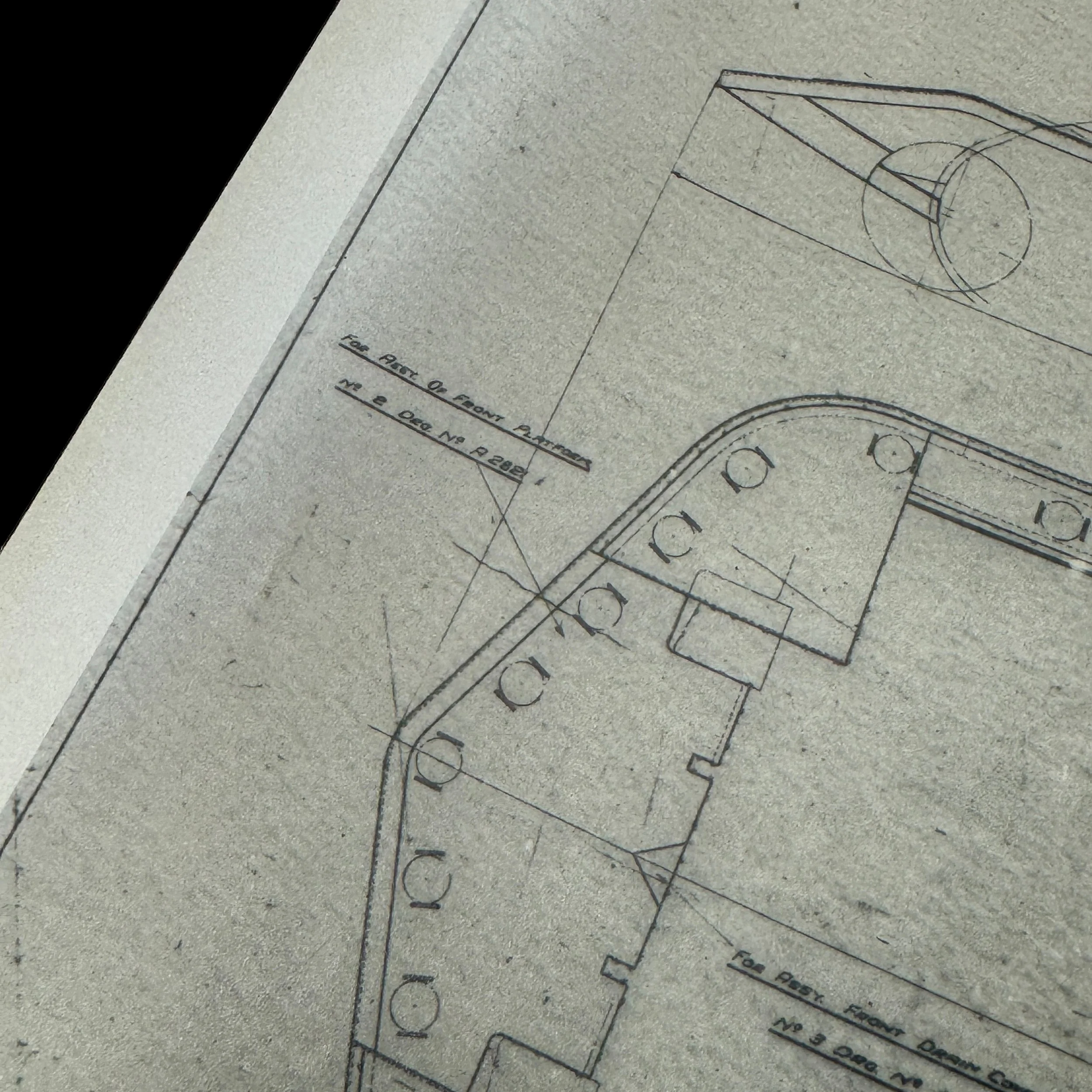



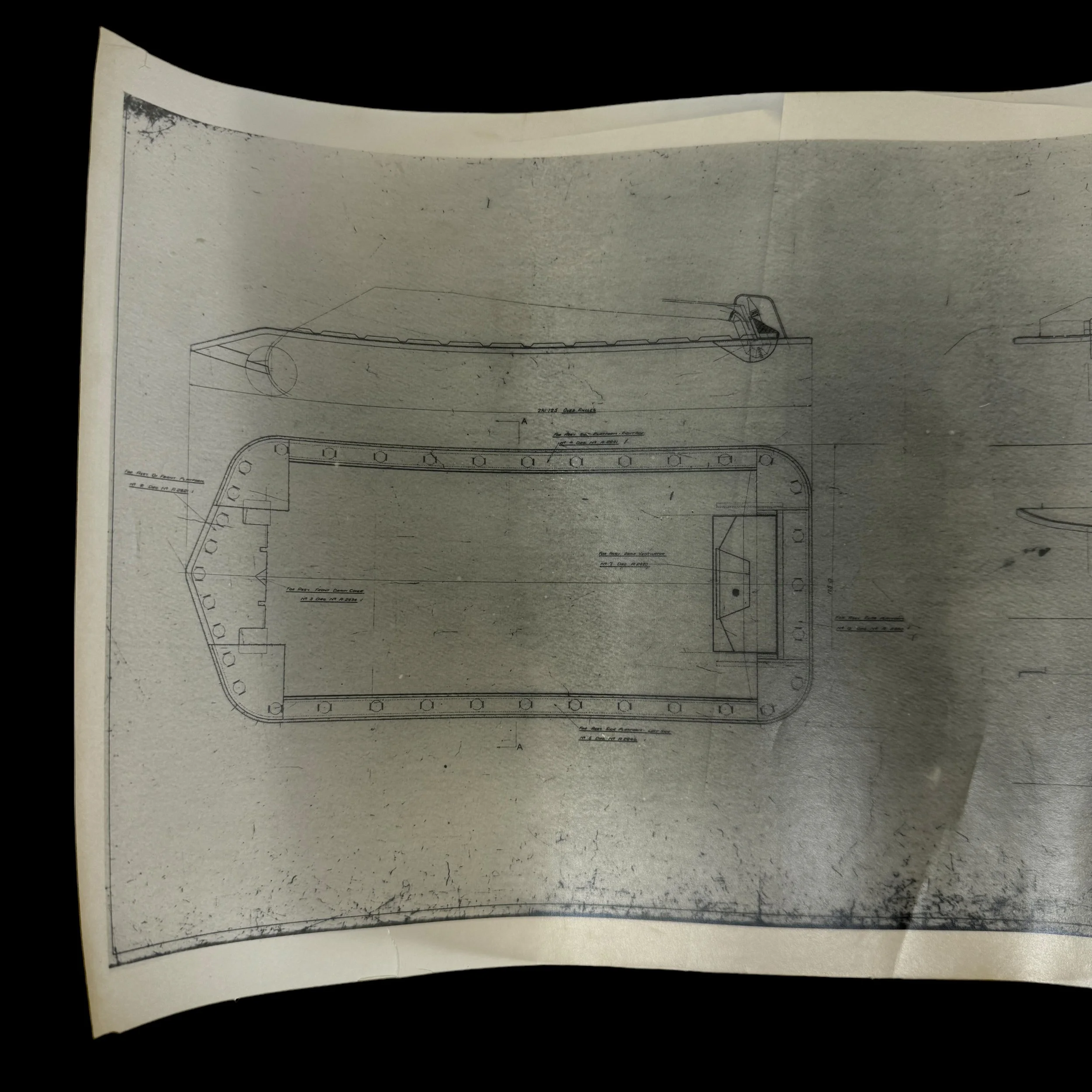

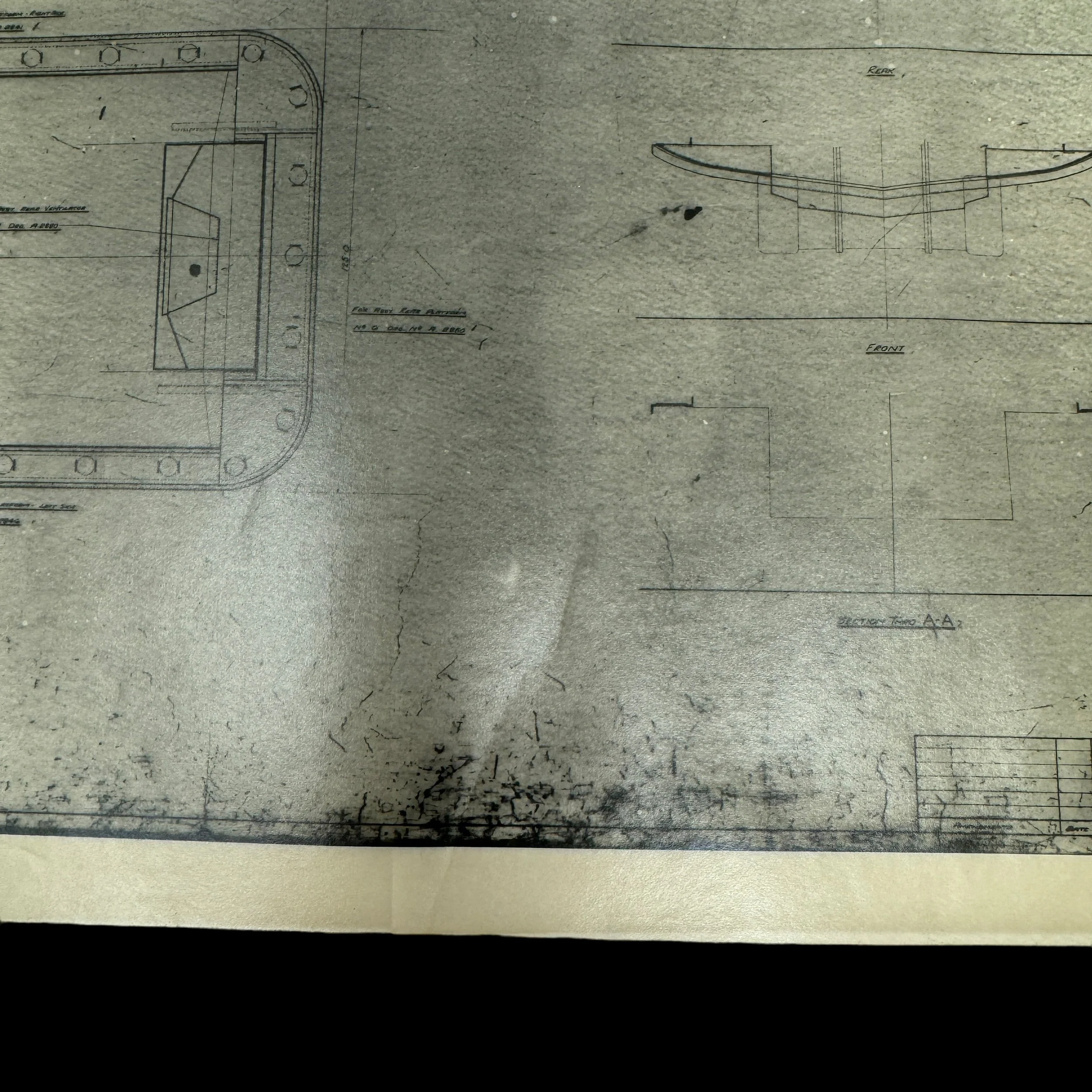




EXTREMELY RARE! Original WWII 1943 SPECIAL D-Day Planning Invasion Blueprint Sherman DD Amphibious 'Flotation Screen' Tank Overlay Blueprint - Metropolitan Cammell - Birmingham, England, UK
Comes with a hand-signed C.O.A.
Size: 8 x 14 inches
*SPECIAL NORMANDY D-DAY SHERMAN DD TANK FLOATATION SCREEN BLUEPRINT AS USED BY SHERMAN DD TANKS AT OMAHA BEACH, UTAH BEACH, SWORD BEACH, GOLD BEACH, AND JUNO BEACH.
This extremely rare and museum-grade World War II artifact is an original October 1943 dated “Metropolitan Cammell -
Birmingham, England, UK” blueprint of the infamous D-Day 'flotation screen' for the Sherman DD Tank. This original semi-transparent overlay blueprint was created on October 25th, 1943. This Invasion of Normandy D-Day 'flotation screen' Sherman DD blueprint was one of the first blueprint designs for the amphibious DD tank that would be used for the Operation Overlord D-Day invasion on June 6th, 1944 and Operation Dragoon, the Allied invasion of southern France on 15 August 1944.
Nicknamed "Donald Duck tanks", were a type of amphibious swimming tank developed by the British during the Second World War. The phrase is mostly used for the Duplex Drive variant of the M4 Sherman medium tank, that was used by the Western Allies during and after the Normandy Landings in June 1944.
DD tanks worked by erecting a canvas 'flotation screen' around the tank, which enabled it to float in water. DD tanks would use propellers to move forward through water, then lower the flotation screens once they had reached land and fight as an ordinary tank.
The DD tanks were one of the many specialized assault vehicles, collectively known as Hobart's Funnies, devised to support the planned invasion of Europe.
This is a once-in-a-lifetime chance to own a truly one-of-a-kind artifact from one of the most infamous amphibious tank modifications of World War II. This original blueprint of the 'flotation screen' Sherman DD Tank is the only known blueprint that is for sale in the public sector. Only a very small handful of these 'flotation screen' Sherman Tank blueprints exist with all being in private museum collections.
Combat Operations of the Sherman DD Tank in WWII:
The Sherman DD (Duplex Drive) tank, one of the most innovative armored vehicles of WWII, played a crucial role in several key Allied operations. Initially designed for the D-Day landings, its use extended to various theaters of war, demonstrating its versatility and strategic value.
Deployment in Various Operations
The Sherman DD tank was prominently used during D-Day on June 6, 1944. Beyond this historic invasion, DD tanks also saw action in Operation Dragoon, the Allied invasion of southern France on August 15, 1944, and Operation Plunder, the British crossing of the Rhine on March 23, 1945. Additionally, DD tanks participated in several operations on the Italian Front in 1945. While some DD tanks were sent to India and the 25th Dragoons trained for their use, the planned operations against Japanese forces in Malaya were never executed.
D-Day: The Normandy Landings
Overview
The DD Sherman tanks equipped eight tank battalions of American, British, and Canadian forces for the D-Day landings. These tanks were transported in Tank Landing Craft (LCT), which could typically carry nine Shermans but fewer DD tanks due to their bulk. British and Canadian LCTs carried five tanks, while the shorter American LCTs carried four.
The plan involved launching the DD tanks about 3 kilometers (2 miles) from shore, allowing them to "swim" to the beaches and support the infantry by overpowering German defenses. The tanks' performance on D-Day was a mix of successes and failures, with their actions varying significantly across different landing beaches.
Sword Beach
On Sword Beach, at the eastern end of the invasion area, the DD tanks of the 13th/18th Royal Hussars' 'A' and 'B' Squadrons performed well, thanks to relatively calm seas. Launched 4 kilometers (2.5 miles) from shore, all but one tank, which was hit by an LCT, reached the beach. The tanks provided crucial fire support for the infantry, helping to secure the beachhead.
Gold Beach
At Gold Beach, the sea was rougher, and the tanks of the Nottinghamshire Yeomanry (Sherwood Rangers) were launched late, about 700 yards (640 meters) from shore. Eight tanks were lost en route. The remaining tanks landed after Sherman Crab (mine flail) tanks had already neutralized many German positions. 'B' and 'C' Squadrons of the 4th/7th Royal Dragoon Guards landed in shallows and drove onto the beach with their screens up to avoid being swamped. Despite heavy losses from German anti-tank guns, the assault succeeded.
Juno Beach
On Juno Beach, Canadian forces, specifically the Fort Garry Horse and the 1st Hussars, were equipped with DD tanks. Only the 1st Hussars managed to launch their tanks, some from as far as 4,000 yards (3,658 meters) and others from 800 yards (700 meters). Twenty-one out of twenty-nine tanks reached the beach, significantly aiding the 7th Canadian Brigade's assault. The 8th Canadian Brigade, unable to launch their DD tanks due to rough seas, faced heavy casualties but still progressed effectively.
Utah Beach
At Utah Beach, the 70th Tank Battalion operated the DD tanks. Despite losing four DD tanks to German artillery fire, the remaining tanks were launched 15 minutes late, 1,000 yards (914 meters) from the beach. Twenty-seven out of twenty-eight tanks made it ashore, albeit off target due to a massive smoke screen. The tanks supported the infantry effectively, helping to clear obstacles and opposition.
Omaha Beach
Omaha Beach saw the most significant difficulties for the DD tanks. Nearly all tanks launched offshore were lost, contributing to the high casualty rate and slow advance from the beach. The first wave at Omaha included 112 tanks from the 741st and 743rd Tank Battalions, each with 32 DD and 24 other Shermans. Of the 741st Tank Battalion's 29 DDs launched, 27 sank due to rough seas and being launched too far offshore. The remaining tanks, and those of the 743rd Tank Battalion, were landed directly on the beach, facing intense German resistance.
The DD tanks were designed to operate in waves up to 1 foot (0.3 meters) high, but on D-Day, they faced waves up to 6 feet (1.8 meters). This, combined with the tanks being launched too far out, led to many being swamped. Despite these challenges, some tanks came close to reaching the shore, demonstrating the crews' determination and resourcefulness.
The Sherman DD tank, with its unique design and amphibious capabilities, played a crucial role in several WWII operations, most notably the D-Day landings. While the tank's performance varied across different beaches, its presence was vital in providing armored support during the critical initial phase of the landings. The DD tank's legacy extends beyond its wartime service, highlighting the importance of innovation and adaptability in military strategy.
The Sherman DD Tank: An Ingenious Innovation of WWII
The Sherman DD (Duplex Drive) tank stands as one of the most remarkable innovations of World War II, playing a pivotal role during the D-Day invasion.
Design and Development
The inception of the Sherman DD tank was driven by the need for a solution to one of the most challenging aspects of amphibious assaults: bringing armored support to shore quickly and effectively. Traditional methods of landing tanks were slow and vulnerable to enemy fire. The idea of creating a tank that could swim originated from the earlier works of British engineer Nicholas Straussler, who developed the concept of a floatation screen for vehicles.
The Sherman tank, already a robust and reliable workhorse for the Allies, was chosen for conversion into an amphibious vehicle. The key feature of the DD tank was its collapsible canvas screen, known as the “flotation screen,” which was supported by inflatable rubber tubes. When deployed, this screen allowed the tank to float and be propelled through the water by twin propellers powered by its own engine. The propellers were mounted at the rear, and a pair of rudders provided steering. This ingenious design enabled the tank to be launched from a landing craft several miles offshore, swim to the beach, and then transition to land combat once it reached solid ground.
Role During the D-Day Invasion
On June 6, 1944, the D-Day invasion, also known as Operation Overlord, marked a turning point in World War II. The success of this amphibious assault depended heavily on the ability to quickly establish a strong foothold on the heavily fortified beaches of Normandy. The Sherman DD tanks were a critical component of this strategy, particularly for the British and Canadian forces landing on Gold, Juno, and Sword beaches.
The DD tanks were intended to land ahead of the infantry, providing immediate armored support to suppress enemy defenses and clear obstacles. However, the execution of this plan faced significant challenges. The rough seas on D-Day proved to be a formidable obstacle. Many of the DD tanks launched too far from shore struggled against the waves, resulting in several sinking before reaching the beach. The American forces at Omaha Beach faced particularly severe losses, with only a few tanks making it to shore due to poor launch conditions and miscommunications.
Despite these setbacks, the tanks that did make it to shore demonstrated their value. On Gold Beach, for instance, the British 79th Armoured Division, equipped with DD tanks and other specialized armored vehicles, played a crucial role in breaching the German defenses. Their ability to provide direct fire support and their resilience under enemy fire contributed significantly to the success of the landings.
Impact and Legacy
The Sherman DD tank’s contribution to the D-Day invasion was a mix of innovation and tragedy, showcasing both the potential and the risks of pioneering military technology. While not all the tanks successfully reached their objectives, those that did were instrumental in providing the necessary armored support during the critical initial phase of the landings.
The development of the DD tank also highlighted the importance of adaptability and ingenuity in warfare. The ability to innovate and develop solutions to unprecedented challenges was a hallmark of the Allied war effort. The lessons learned from the DD tanks’ performance on D-Day informed future amphibious operations, leading to improvements in both equipment and tactics.
The legacy of the Sherman DD tank extends beyond its role in World War II. It represents a significant milestone in the evolution of amphibious warfare, influencing the design of future amphibious vehicles and the strategic planning of combined arms operations. The concept of integrating armor with amphibious capability continued to evolve, leading to more advanced designs in the post-war era.
In commemorating the Sherman DD tank, we recognize the ingenuity of its designers and the bravery of the crews who operated these innovative vehicles under extremely challenging conditions. Their efforts and sacrifices contributed to the overall success of the D-Day invasion, a turning point that helped pave the way for the Allied victory in Europe.
The Sherman DD tank, with its unique design and critical role during the D-Day invasion, stands as a testament to the innovative spirit and determination of the Allied forces during World War II. Its development addressed a significant tactical challenge and, despite the difficulties encountered, demonstrated the potential of amphibious armor in modern warfare. The legacy of the Sherman DD tank continues to inspire and inform military strategy and technology, highlighting the enduring impact of innovation in the face of adversity.